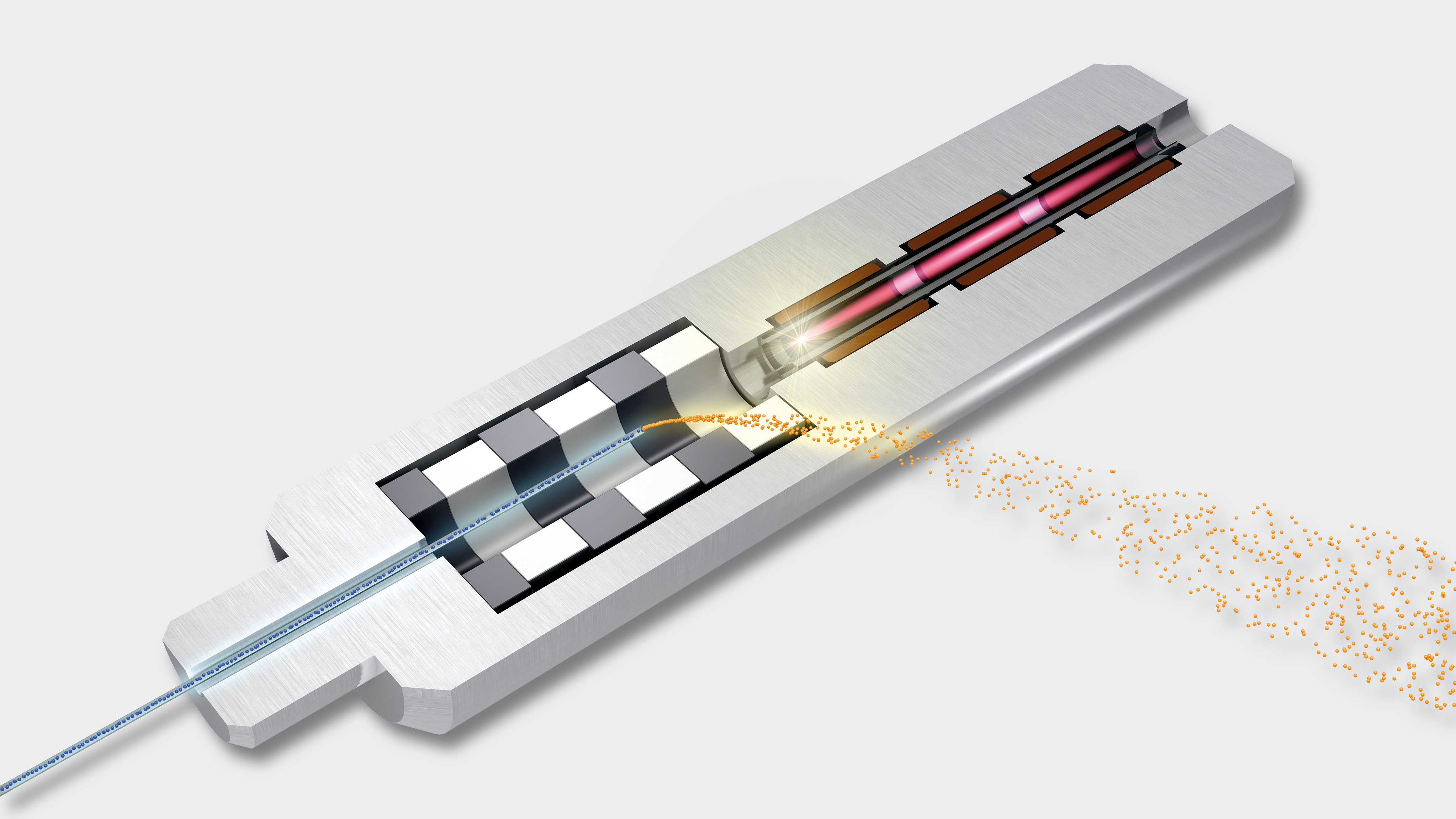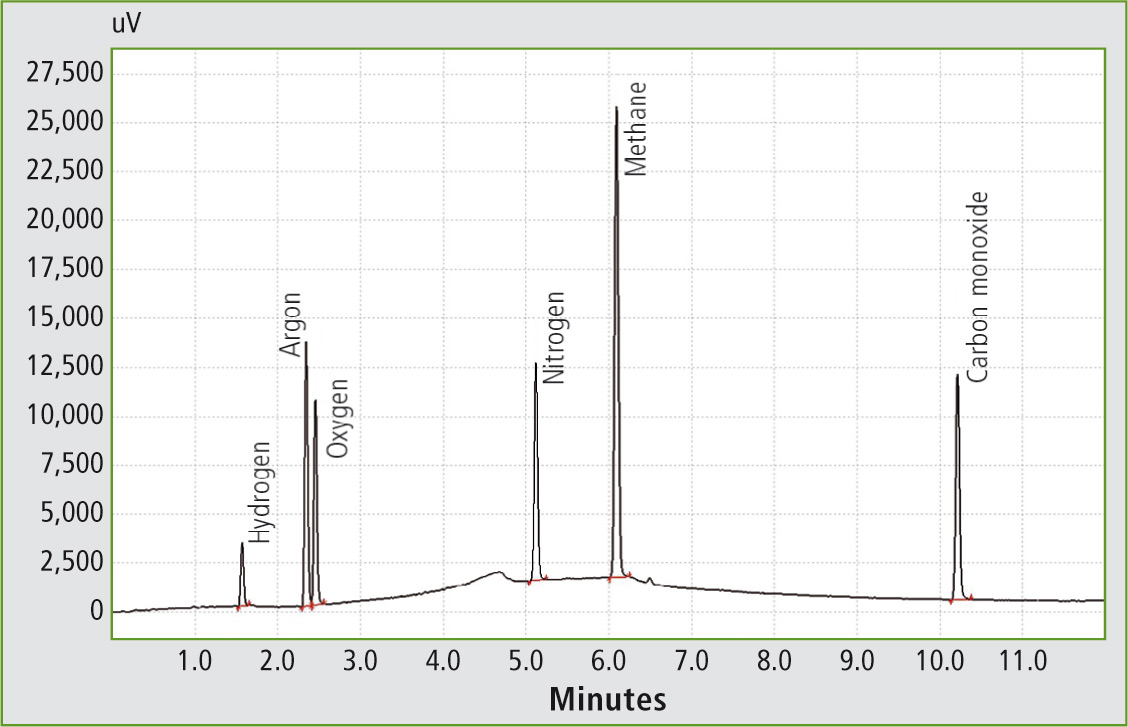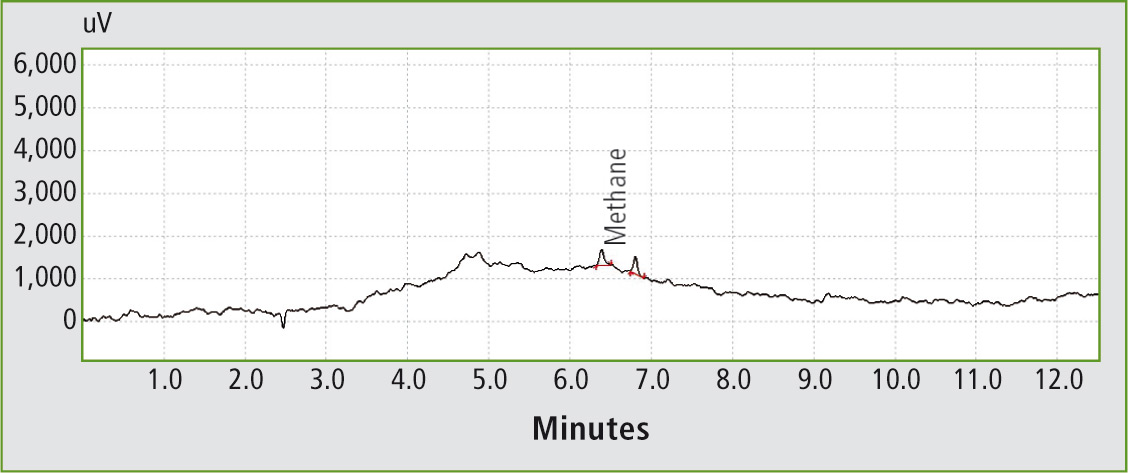High sensitivity meets robustness
Gas measurements – Unique BID plasma technology for ppb detection limits
Gas chromatography is a common technique in monitoring of complex gas samples emitting from exhaust, process supervision or quality control of gases. Detection limits in the ppb range are often required so that without extensive enrichment technique, injection of a sample volume of 500 – 1,000 µL requires a very sensitive detection system. Furthermore, gas samples normally consist of several components (e.g. permanent gases and hydrocarbons), so a universal detection system is needed.
The Flame Ionization Detector (FID) is popular due to its exceptional combination of sensitivity, reproducibility and long-term stability. Unfortunately, the FID detection spectrum lacks permanent gases such as oxygen, nitrogen and carbon dioxide. On the other hand, while Thermal Conductivity Detectors (TCD) are universal detectors, they operate in the ppm detection range and are therefore not sensitive enough.
In gas chromatography, helium ionization technique has become an interesting solution that allows universal detection of all components with high sensitivity. Detection limits in low ppb range are achievable without any extensive sample enrichment techniques. However, easy operation and long-term stability of systems operated in trace analysis is still challenging.
Unique plasma technology
Shimadzu’s new Barrier Ionization Discharge Detector (BID) combines high sensitivity of helium ionization technique with robustness and excellent long-term stability. The unique technology generating the helium plasma allows detection of components with an ionization potential below 17.6 eV. In this way, the detector can see all components except helium and neon.
 Figure 1: Cross-sectional drawing of a BID detector. Introduction of the discharge gas and helium plasma generation takes place in the upper half of the detector, while detection of the components eluting from the capillary column takes place in the lower half.
Figure 1: Cross-sectional drawing of a BID detector. Introduction of the discharge gas and helium plasma generation takes place in the upper half of the detector, while detection of the components eluting from the capillary column takes place in the lower half.
The helium plasma generation is done within a thin quartz glass tube, building a dielectric barrier between the electrodes and the plasma (Figure 1). In this way the plasma generating electrodes are shielded from contamination by the sample and effects from the plasma itself – one reason for the superior long-term stability of the BID detector. The light emitted from the helium plasma leads to ionization of components eluting from the chromatographic column. Ions generated in this way are detected by special ‘kovar alloy’ collection electrodes which are another special development contributing to the stability of BID.
Excellent trace capabilities
 Figure 2: Standard chromatogram of permanent gases and hydrocarbons
Figure 2: Standard chromatogram of permanent gases and hydrocarbons
The quality control of high purity helium is a good example showing the trace capabilities of the BID detector. The chromatogram in figure 2 shows the result of a standard containing hydrogen, argon, oxygen, nitrogen, methane and carbon monoxide in concentrations from 3 to 5 ppm. The gas was sampled and injected by a 6 port 1/16” valco valve with sample loop of 500 µL and equipped with helium purged rotor housing. The gas sample was split 1:1 and injected on a Restek Molsieve column RT-Msieve 5A 30 m ID 0.53 mm df 50 µm. Starting with the temperature program at 0 °C, baseline separation of argon and oxygen was achieved with a chromatographic resolution of R > 1.65.
Detection and quantification limits for the components are shown in table 1 and are calculated on a signal to noise ratio S/N = 3.3 for the detection limits, and on S/N = 10 for the quantification limits. The reproducibility of the respective components over 5 measurements ranged from RSD = 1.1 – 1.5 %.
 Table 1: Detection limits calculated on a signal to noise ratio S/N = 3.3 and quantification limits calculated on S/N = 10
Table 1: Detection limits calculated on a signal to noise ratio S/N = 3.3 and quantification limits calculated on S/N = 10
For baseline separation of argon and oxygen the temperature program was started below room temperature, so active cryogenic cooling of the oven with liquid nitrogen or carbon dioxide is required. Since the BID has almost equal response factors (peak area/concentration) for argon and oxygen, this can be avoided if a sum concentration for both components would be sufficient. The BID response for argon 9.11 area cts/ppb is very similar to oxygen 9.19 area cts/ppb, so the concentration error evaluating both components as sum peak would therefore be less than 1 %.
Figure 3 shows a chromatogram of an unknown helium sample with purity 6.0. The absence of nitrogen and oxygen in the chromatogram proves that the leak rate of the system against ambient air was below the respective detection limits of 48 and 66 ppb respectively. A small concentration of just 68 ppb methane was measured in the high purity helium.
 Figure 3: Sample from helium gas cylinder with purity 6.0
Figure 3: Sample from helium gas cylinder with purity 6.0
Suitable for many applications
High sensitivity and robustness make the Barrier Ionization Discharge Detector (BID) an interesting solution for many applications which would require two or more detectors in order to achieve detection limits in the ppb range. Based on its sensitivity, it can replace a FID detector for analysis of hydrocarbons, thereby improving detection limits by a factor of two or more in the case of small alcohols, aldehydes or acids for which FID is less sensitive. For permanent gases, the BID achieves 200 times better detection limits compared with TCD detector, allowing trace analysis in low ppb range. Because of its robustness and long-term stability the BID is the ideal solution for replacement of TCD and FID combination, which is often used for measurements of gaseous samples containing permanent gases and hydrocarbons.